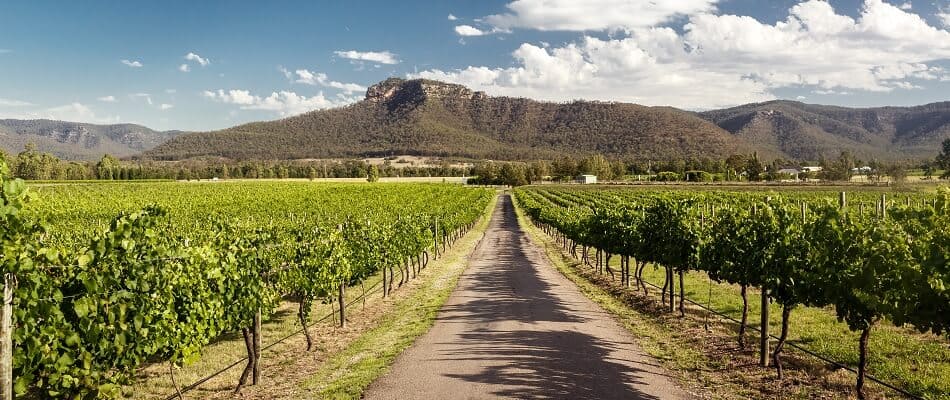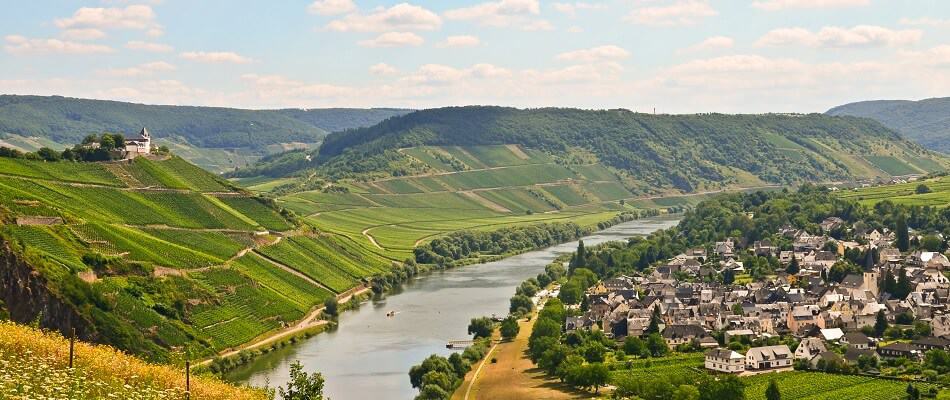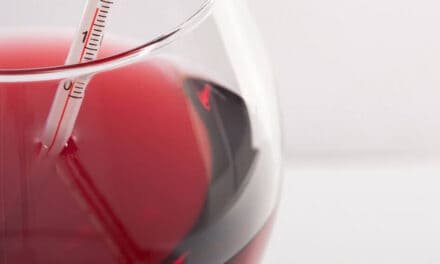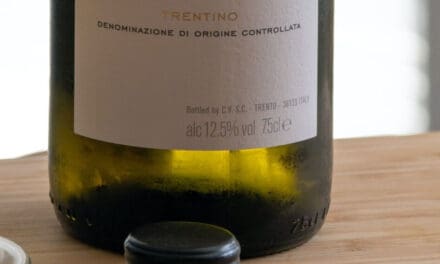WHERE DOES TERROIR ORIGINATE FROM?
The word terroir is French and is derived from the Latin word “terra”, which means “earth”. It has been known since the 16th century and was used for wines and other food products. Interestingly, it had a very negative meaning at that time. The high society, including the noblemen, wanted to consume foods and beverages without any perceivable regional characteristics. Thus, wines with a rustic “gout de terroir” (English: taste of terroir) were considered inferior and only acceptable for ordinary people. In the early 20th century, the term’s meaning changed. Primarily Burgundy vintners and sparkling wine producers from the Champagne region were responsible for this shift. They claimed that their high-quality wines resulted from their home regions’ superior soils. Wine experts further developed the concept of terroir in the following decades. Vintners included not only soils but also factors such as topography and climate to describe its meaning. The technological advancements in winemaking contributed to the spread of this concept for a simple reason: With better technology, the differences in wine quality due to human error decreased. And what was left to explain these differences was terroir.What Is Terroir in English?
Actually, there is no precise translation for terroir. Neither the English nor the Italian or German language has a proper word. The Spanish tend to use the term “terruño” sometimes, but it does not really cover the concept’s whole meaning. So, in the end, terroir is an international term known and used by wine lovers from all around the world.Terroir vs. Appellation – How Are They Connected?
Although the term terroir, in its current sense, is only about 100 years old, the ideas behind it are much older. Vintners from many traditional wine countries have acknowledged the unique quality of wines from specific regions for centuries. They were always aware that a region, a single vineyard, and even a specific part of a vineyard could produce wines with unique characteristics, even when made from the same grape variety. And they were eager to protect their wine names from standing out against competitors from other places. For this reason, vintners and lawmakers developed appellation systems to distinguish wines. These appellations of origin protected (and still protect) wine names. Only local vintners may use them. Typically, they are also subject to limitations regarding the permitted grape varieties and production techniques. The purpose of these limitations is to make sure that appellation wines represent the region they come from. They shall fulfill ambitious quality criteria while still bringing out the unique local terroir. In summary, it is fair to say that terroir is the basis for the appellation of origin. And it helps wine lovers to identify a wine’s characteristics based on its name.HOW DOES TERROIR AFFECT WINE?
Terroir is not a single factor but a group of factors that impact wine taste. Among them are soil composition, climate and weather, and terrain.Soil Composition
As the term terroir derives from the Latin word for earth, it makes perfect sense that soil plays a vital role in this concept. And there are multiple reasons why soil is a crucial factor for wine quality.Heat Retention
Some types of soil retain heat and warm up the vineyard quickly. These types enable vintners to grow late-ripening varietals in regions that would otherwise be too cool. Examples of heat-retaining soils are flint, slate, granite, and volcanic soils.Drainage
Although water is essential for vines, too much can be harmful (we will discuss this in more detail when talking about climate later). Thus, soils that support proper drainage keep the plants healthy. That’s true in particular for porous soils such as chalk or gravel.Water Retention
While drainage is crucial to protect vines from overirrigation, water supply in dry regions is essential as well. Soils that can retain water are the solution. Examples include limestone, silt, or clay.Nutrients
Soil provides nutrients that vines need to flourish. These nutrients include phosphates, which are necessary for root development, iron for photosynthesis, potassium for building a robust immune system, and other minerals. Soils like alluvium, loam, or volcanic soils are typically rich in nutrients and produce high yields. However, that is not necessarily a good thing. Some of the best wines are grown in relatively poor soils. The reason is that low-nutrient environments trigger a survival mechanism in vines: They put all their energy into producing sugar-rich grapes to attract birds that consume them and carry the indigestible seeds to more fertile regions. And these tasty grapes produce deliciously complex wines.Climate
Climate is another important aspect of terroir that can impact a wine’s taste significantly. And again, there are several sub-factors to consider:Average Temperature
The average temperature might be the factor with the biggest impact. It determines a wine’s body and acidity to a large degree. When grown in a cool region like Germany or Central France, wines typically are light-bodied. They have a high acidity level and often offer flavors of citrus or green fruits. In contrast, wines from hot regions such as Sicily (Italy) or New South Wales (Australia) tend to have a full body and low acidity. It is common to taste tropical and ripe red and black fruits when drinking them.
Hunter Valley, New South Wales, Australia
Although there are exceptions, Old World wine countries usually belong to the cool region category. In contrast, most New World regions have a hot climate.
Diurnal Temperature Range
Besides the average temperature, the diurnal temperature range is crucial. It is the difference between daytime and nighttime temperatures.
A high diurnal range, resulting in hot days and cold nights, is beneficial for grapes. The reason is that during the night, the vine stocks can rest and recover from the heat of the day. They can preserve their acidity and most elegant flavor compounds, which would vanish quickly during hot nights. Ultimately, the chance to rest leads to fresher and more aromatic wines.
If the difference is low, so both days and nights are relatively warm, the grapes can’t recover effectively. In this case, the resulting wine is less acidic and doesn’t taste as fresh.
Continentality
Another factor for terroir that is related to temperature is continentality. It is defined as the temperature difference between the hottest and the coldest months of the year.
If the winter months are only slightly cooler than the summer months, wine experts speak of a low continentality. That’s typically the case for wine regions close to the coast or big lakes. In these areas, the grapes have much time to grow and ripen, so especially late-ripening varietals benefit from these conditions. When grapes ripen longer, they accumulate more sugar that can ferment into alcohol. So the result of low continentality is a wine with a fuller body.
In regions with a high continentality, the seasons differ noticeably from each other. Winters are cold, and frost might break early, so the grapes’ growing time is limited. Logically, the wines made from them are lighter. But high continentality can also open the door to making special types of wine. For instance, to produce ice wines, vintners let their grapes freeze on the vine stocks. And in regions where frost breaks early, that’s much easier than in low-continentality areas.
Hours of Sunshine
The average hours of sunshine per day are closely connected to temperature. But the two aren’t exactly the same. And in some cases, they do not go hand in hand.
Wine regions at high altitudes can have many hours of sunshine and relatively low average temperatures simultaneously. As sunlight is necessary to create sugar, these conditions lead to sweet grapes. When fermented, these grapes produce full-bodied, high-alcohol wines. But due to the low temperatures, these conditions allow heat-sensitive varietals to flourish. So they open more options for local vintners that might not be available in hot regions.
Rainfall
Finally, rainfall is a crucial climatic factor that determines terroir. Obviously, that is the case because vines need water to grow. This need varies throughout the growth cycle, though.
At the beginning of the season, vines need plenty of water to grow their leaves. But to develop healthy, tasteful grapes, the plants benefit from a water shortage. That might sound contradictory, but it makes sense: Lack of water forces the vines to attribute all of their energy to growing grapes instead of wasting it on producing more leaves. So less water means more flavorful wines.
Too much rain can even be harmful to the vines. The risk of infections or rotting roots increases significantly when the soil is excessively wet over a long time.
Terrain
Terrain affects vines and wines as well. And several topographical aspects can make a difference.
Altitude
Altitude determines the climatic conditions to a significant degree. As we have discussed above, it impacts especially temperature ranges.
Slopes and Orientation
Vines planted on slopes have better exposure to sunlight than those growing on flat land. Of course, the slopes’ orientation must be correct. In Europe, North America, and other regions in the Northern hemisphere, the slopes must be south-facing. In the Southern part of the world, they should be north-facing.
Besides more sunlight, slopes have two other advantages:
- They provide better drainage.
- They minimize the risk of frost because cold air sinks to the valley floors.

Vineyards on Slopes in the Mosel Region, Germany






